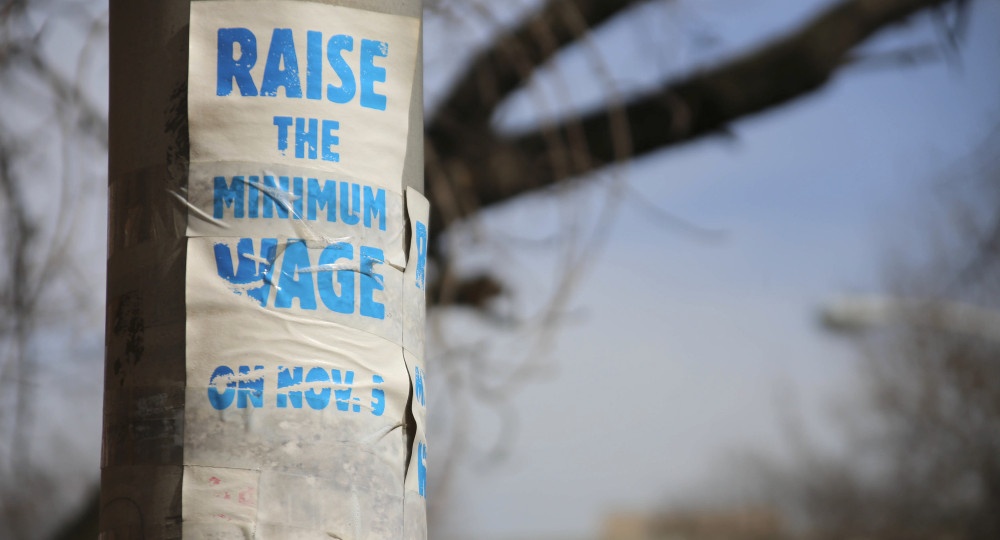
There is probably no more debated topic within economists’ circles these days than the impact of minimum wages. And with the recent run at a $15 minimum wage as part of the pandemic relief bill, the topic is again front and center.
Traditional theory says that any time the price of something increases (low skill labor) the demand for that thing will fall (fewer jobs and hours). Economists have performed a huge number of studies on the topic and the results are all over the place. Some results show a drop in labor demand and others show little change. Seattle, with its aggressive minimum wage laws, is at the center of these debates and studies.
The problem is that economists cannot conduct randomized control studies of wage increases and must rely on natural experiments that take advantage of discontinuities in wage rates across time and/or space. What are the labor market differences before and after a minimum wage increase? What are the differences in labor demand between North Seattle and Shoreline? Delridge and White Center? There are so many variables to try to control in these situations that it is hard to draw firm conclusions.
What we do know is that wages—average and minimum—vary widely across the country and that the impact of a high national minimum wage will vary. And as the Indexer has discussed several times, wages are just one part of the equation of the “utility” of a place. A dollar goes a lot farther in some places than others, and wages tend to reflect those cost differences. Here we present some basic data on existing minimum and average wages and the effects of going to a $15 national minimum wage.
Figure 1 shows existing state minimum wages for 2021. As the notes make clear, many states have multiple minimums, but we have included the one most likely to apply to most employers.

Washington has the second highest statewide minimum wage. Twenty states follow the current national minimum wage of $7.25, either through their own statutes, or as the default. Figure 2 shows average hourly earnings by state for 2019, based on a simple calculation of full time work at the average annual wages in the state.

Here we see that Washington has the fourth highest average wage in the country. The median wage would be lower, as we have quite a number of very highly paid people in Washington who drive up the average.
Figure 3 puts figures 1 and 2 together to compare state minimum wages and state average wages: what share of the average wage does a minimum wage worker earn?

There is a lot of variation here. Maine and Vermont both have relatively low average wages, but relatively high minimum wages. In contrast, average wages in Texas and New Hampshire are close to the national average, but their minimums are quite low.
Figure 4 shows what Figure 3 would look like under the proposed national $15 per hour minimum wage.

Now, Washington and other high wage/high cost states go to the bottom of the list. At $15, minimum wage workers in Mississippi would be getting 75 percent of the current state average wage, far higher than in the most generous state (Maine) today.
Finally, Figure 5 shows the growth in the minimum wage that $15 per hour would bring. This is a mirror of Figure 1.

Those states adhering to the current federal minimum wage would see their minimum wages more than double. Washington would see only a minor bump.
The challenge for economists trying to predict the impact of the $15 minimum wage is that the natural experiments they have to work with don’t present anything close to the situation that states like Mississippi would face. The minimum wage increases that have been studied tend to be small and incremental. Seattle’s move to $15 was quite dramatic, but it also came at a time of booming employment when it was very difficult to hire workers much below $15 anyway.
Remember, a national $15 minimum wage would apply in New York or Seattle where it might have little impact, but also apply in rural towns across the country. In many of these communities the economic base is weak, large numbers of people make very low wages and there is just not that much money circulating in the local economy. Where would the money come from for a large share of the local workforce to get a raise?
Looking Ahead
The drive for a national $15 minimum wage has a lot of momentum, but faces a tough time in the U.S. Senate, where senators will be responding to employers in their state who would be facing major labor cost disruptions. An increase is likely inevitable, and politics, rather than economics, will set the eventual level.
But the entire theory of spatial equilibrium calls into question the wisdom of setting national wage rates. Wages reflect the value of work, but also the relative cost of living in a place. A new national $15 minimum wage would keep urban economists busy for years trying to figure out how it affects decisions about where to live and where to locate a business.
